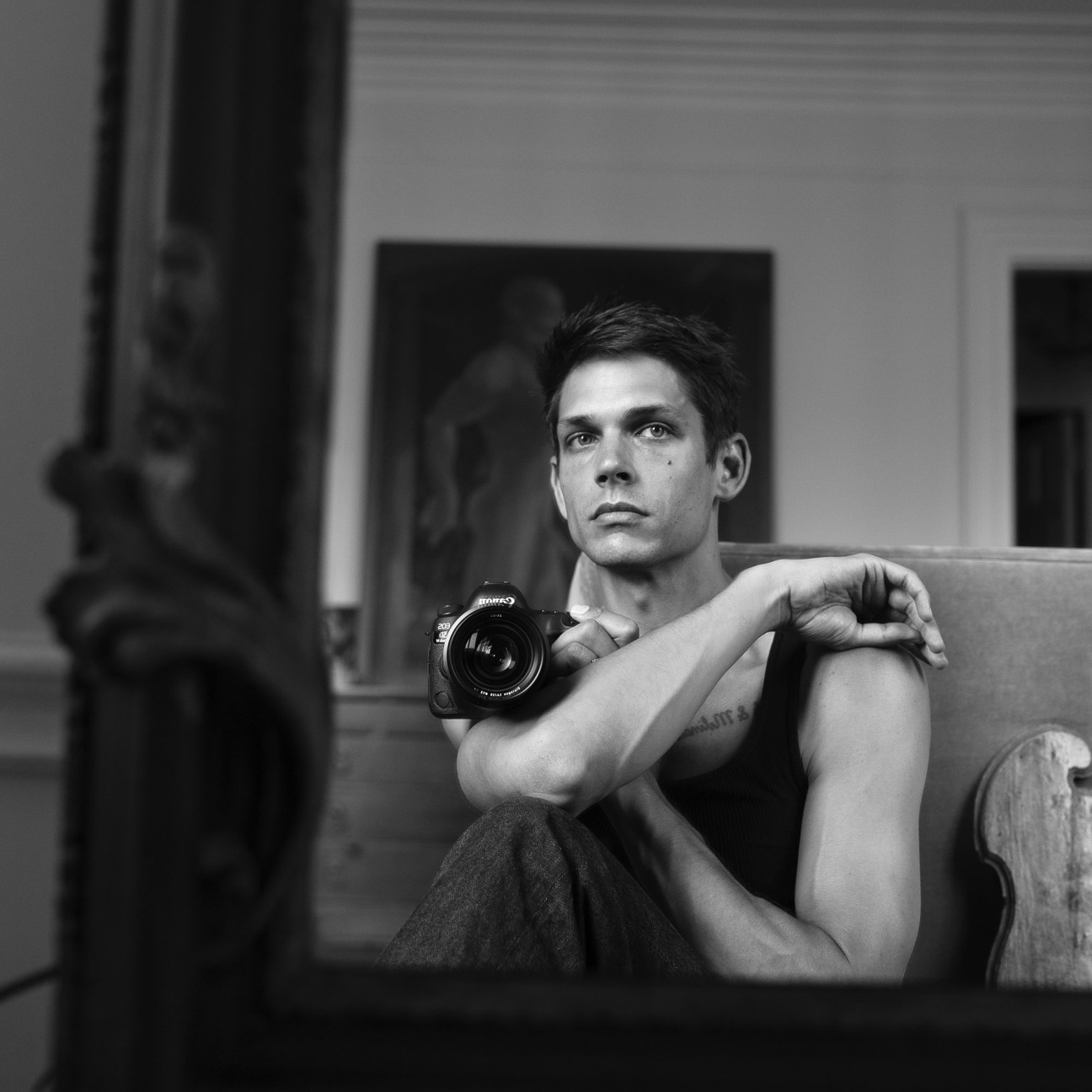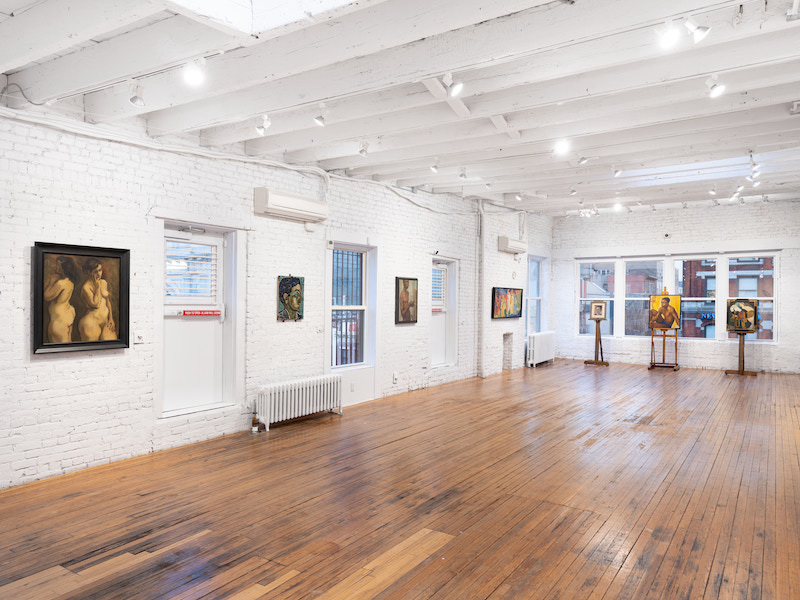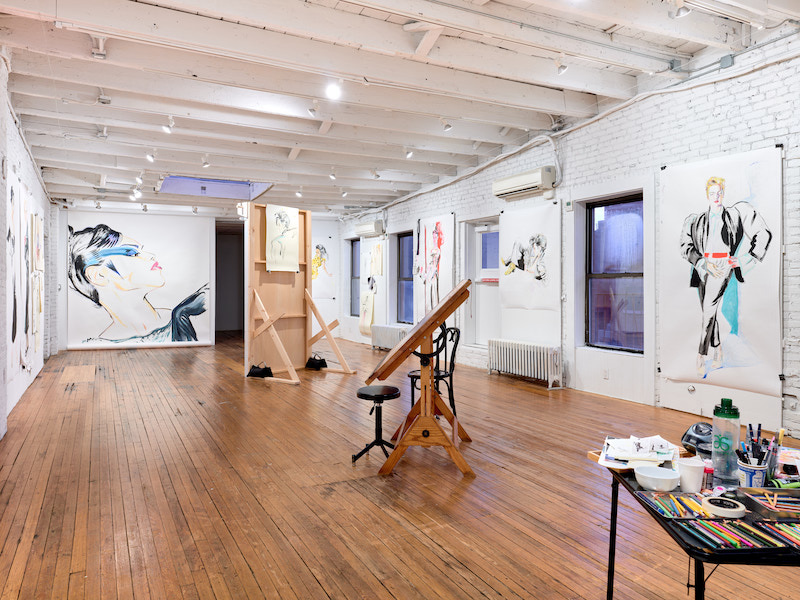
This is Turning Points, CULTURED’s column dedicated to big life choices, bucket list moments, career shifts, and forks in the road. This week, photographer Ethan James Green explains how he reimagined his career by opening New York Life Gallery last fall.
Ethan James Green wanted to be a fashion photographer since he was 14. He signed with Ford Models at 17 years old, developing a love for portraiture soon after by apprenticing with late photographer David Armstrong, and reached his goal of becoming the “go-to photographer” to the stars, shooting celebrities for glossies like Vogue and Vanity Fair, all while he was still in his 20s. Then, without any warning, it all nearly came to an end.
He wasn’t getting enough new assignments to stay afloat. Experiencing a drop-off like that “much earlier than ever imagined,” he says, left him feeling blindsided; he had to confront an eye-opening reality that “the party just kind of keeps going, and you can be left behind.” Even though he was able to resurrect his fashion photography business, Green decided that sense of powerlessness was something he “never wanted to feel ever again.” So he made a backup plan—and realized that sometimes dreams are like rules: they’re meant to be broken.
“The gallery started out as a hobby. I have a space that’s big in Chinatown, and it was split in half as my office and then the space that I've taken pictures in. I have a lot of friends who come in and out of the space. And so the space has always been this spot where people talk about ideas and people create. I wanted to build on that.

I still do a lot of fashion work. That's what first brought me to the city when I was younger—I was modeling. But before fashion photography, I was shooting portraits. That work turned into my first monograph, Young New York, which was published by Aperture in 2019. After that, fashion kept me so busy that I got swallowed up by it, in a way.
Then, in 2021, I almost lost everything because no commercial clients were hiring me. I had a very clear idea of where I was going, but then all of a sudden it felt like a rug was pulled out from underneath me. And you don't know if your career is going to start back up again. Or it's over.
That was quite scary because I almost lost my studio—and everything. Getting hired freelance in general, and I think a lot of people could probably relate to this, it can just stop. It’s like you're waiting to be chosen. You're waiting for someone to call you in.
So once things started happening again, I [said to myself] I just couldn't ever be in that position again. It became an opportunity to reimagine what my career could look like. This was one of the big things that caused the shift towards the gallery.

With the gallery, you get to be the person who makes the shots. And [it] happened very organically; but then once that happened, I was like: Oh, this is it. I feel like I’ve found something else that I'm good at.
I dreamed of being a fashion photographer when I was 14 years old. On the journey to get there, I realized my love of portraiture. I learned that I like to take pictures outside of fashion as well. But I got to where I wanted to be. Fashion can be very overpowering, because you’re working with celebrities, that’s what ends up representing you. Sometimes we only have space to think of people in one way.
But with that lull, I discovered something that I love doing that isn’t photography, and it’s allowed me to allow myself to dream and move forward in a broader way.
When I had decided that I wanted to start showing work in the space, my good friend, Marcus Cuffie, asked to use my scanner because they were starting to document their late father's archive. And their father's name is Steven Cuffie. I saw the work, and it just blew me away.
[For my second show,] I became friends with Drake Carr, who's a painter and illustrator. He had asked me if he could borrow the space to trial life drawings. I was like, 'Why don't we just make a show out of it—a live show? People come to see the work, but they can see you create it at the same time.'
A big thing about the [third] show that’s up right now is all the people that we’re showing are names that are recently forgotten—but half of them are in major museums in New York.
So right now, one show just leads us to the next. Our goal is to do three shows a year. Since I'm coming into it not from the gallery world, the approach is very… it’s a different thing."










 in your life?
in your life?

